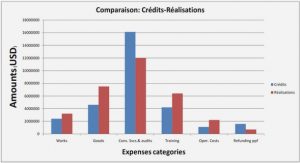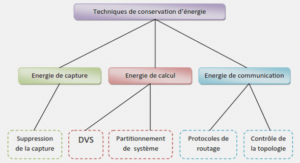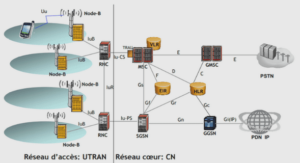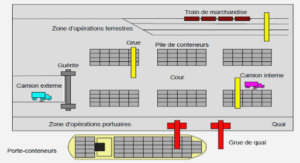HISTORY AND PERSPECTIVE OF GNSS FOR PRECISE POSITIONING
Differential Global Positioning System
DGPS is more refer here as local DGPS compared to wide area DGPS, like WAAS, MSAS or EGNOS. The DGPS principle is based on a reference station, whose position is known, that collects the GPS measurements and computes measurements corrections. These corrections come mainly from the satellites’ ephemerides and clocks errors, and the atmospheric delays. They are then transmitted through radio frequency to users able to receive them (usually from 100 kHz to 1.5 GHz).
Development of RTK technology
The RTK technology appears in the early 1990’s with the use of the carrier phase measurements instead of the C/A code. In fact, the carrier phase measurements is a ‘gift’ from the US army to the civil users since it was not originally intended to be of any use in the original project. It is impressive, because the carrier-phase is a much more precise observation. But in the same time, it has some inherent ambiguity which needs to be resolved. Long static observations sessions were necessary to obtain accurate precision and kinematic use was not possible in the beginning.
Carrier phase measurements
The carrier phase observable is the difference between the received satellite carrier phase and the phase of the internal receiver oscillator. The measurements are recorded at equally spaced time. As the distance between the satellite and the receiver changes in time, the carrier phase difference changes with the same proportions. The carrier phase observable represents the distance variations between the satellite and the receiver. If integrated over time, it can reflect the distance between the receiver and the satellite from the beginning of tracking
|
Table des matières
INTRODUCTION
CHAPTER 1 HISTORY AND PERSPECTIVE OF GNSS FOR PRECISE POSITIONING
1.1 Overview of GNSS history
1.2 Evolution of the GNSS and the satellite constellations
1.2.1 GPS Space Segment: from Block II to Block IIF .
1.2.2 Other satellite constellations
1.2.3 SBAS system, a novel constellation
1.3 Signals for high precision positioning
1.3.1 Actual GNSS signals
1.3.2 New GNSS Signals
1.4 From DGPS to network RTK
1.4.1 Differential Global Positioning System
1.4.2 Development of RTK technology
1.4.3 Future evolution of RTK
CHAPTER 2 OBSERVATIONS FROM THE GPS SIGNALS AND THEIR ASSOCIATED ERRORS FOR PRECISE POSITIONING
2.1 Backgrounds
2.2 Pseudo-range and carrier phase observations overview
2.2.1 Pseudo-range measurement
2.2.2 Carrier phase measurements
2.2.3 Doppler measurements.
2.2.4 Summary of the GPS observations
2.3 Details of common errors for all the observations
2.3.1 Troposphere delays
2.3.2 Ionosphere delays
2.3.3 Satellite ephemerides errors and its impact on positioning
2.3.4 Other common-mode error
2.4 Details of non-common errors for all observations
2.4.1 Multipath error
2.4.2 Receiver noise
2.5 Expression of double difference measurements
CHAPTER 3 ROBUST KALMAN FILTER FOR REAL-TIME HIGH PRECISION POSITION ESTIMATION
3.1 Satellite management in the Kalman filter
3.1.1 Satellite selection criterions
3.1.2 Stochastic model assignment of the satellite receiver measurements
3.2 Development of the improved Kalman filter
3.2.1 State vector, the functional model and associated variance .
3.2.2 Observation model
3.2.3 Recursive equations of the Kalman filter
3.2.4 Robust management of the observations
3.3 Ambiguity resolution of the carrier phase
3.3.1 Using the dual-frequency ADR to combine ambiguities
3.3.2 Overview of the resolution of the double difference ambiguity
3.3.3 Overview of the LAMBDA method
3.3.4 Validation method for the fixed ambiguities .
3.4 Global summary of the complete RTK technique .
CHAPTER 4 ALGORITHM VALIDATION FOR SHORT BASELINE RTK USING LACIME-NRG GNSS AND NOVATEL RECEIVERS
4.1 Introduction
4.2 Static analysis and performance of the GNSS receiver
4.2.1 Static double difference measurements precision
4.2.2 Float Solution results for GNSS and Novatel configuration
4.2.3 Ambiguity resolution results and fixed solution analysis
4.3 Analysis of the kinematic mode with both Novatel receivers (short baseline)
4.3.1 Experimental procedure
4.3.2 Float and fixed solution results
4.3.3 Velocity error of the dynamic solution
4.3.4 Ambiguity resolution
CHAPTER 5 CORRECTIONS FOR MEDIUM AND LONG BASELINE RTK ANDRESULTS
5.1 Presentation of the ionosphere modeling estimation for medium and long
baseline scenario .
5.1.1 Ionosphere error state in the weighted ionosphere estimation.
5.1.2 Ionosphere pseudo-observations in the weighted ionosphere model
5.1.3 Other non-common errors corrections
5.2 Static validation of the ionosphere weighting scheme for medium baseline
5.2.1 Experimental procedure and methodology
5.2.2 Ionosphere estimation of the medium baseline solution
5.2.3 Solution precision using two different ionospheric corrections
5.2.4 Ambiguity resolution performance
5.3 Analysis of long baseline high dynamic test
5.3.1 Experimental procedure
5.3.2 Atmospheric errors estimation using the ionosphere weighted model
5.3.3 Ambiguity resolution performance of the solution
5.3.4 Analysis of the long baseline fixed solution .
CHAPTER 6 CONCLUSION AND RECOMMENDATIONS
6.1 General Conclusion .
6.2 Recommendations
ANNEXE I ORBIT/CLOCK SATELLITE DETERMINATION USING BROADCAST EPHEMERIS
ANNEXE II RESULTS OF ANOTHER GEDEX FLIGHT, FOR MEDIUM BASELINE HIGH DYNAMIC SCENARIOS .
ANNEXE III OVERVIEW OF THE RTK SOFTWARE AND THE C FUNCTIONS FOR RTK POSITIONING USING NOVATEL AND GNSS RECEIVER.
REFERENCES
![]() Télécharger le rapport complet
Télécharger le rapport complet






